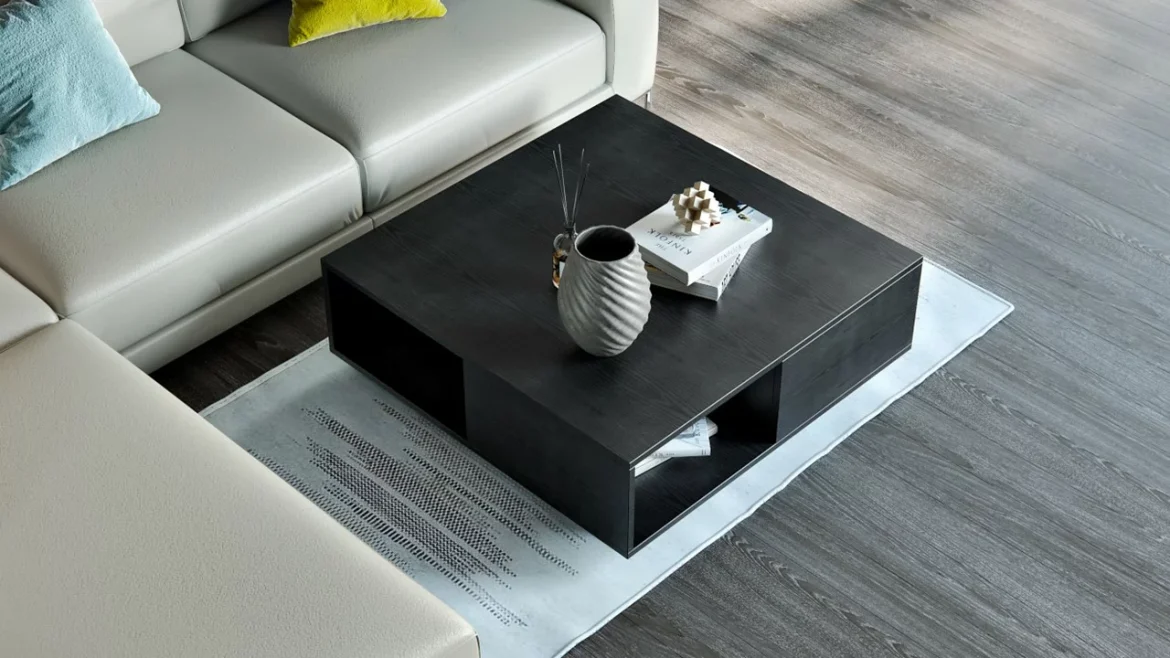Choosing the right coffee table can significantly enhance both the functionality and aesthetics of your living space. Whether you’re looking to complement existing furniture or define a new style, here’s a guide to help you make the perfect choice.
Consider Your Room Layout and Size
The first step in selecting a coffee table is to assess the layout and size of your room. Measure the area where the coffee table will sit, ensuring there’s ample space around it for movement and other furniture. For smaller rooms, opt for a compact design that doesn’t overwhelm the space. Conversely, in larger rooms, you can consider larger or multiple coffee tables to create balance and functionality.
Determine the Purpose of Your Coffee Table
Coffee tables serve various purposes beyond just holding drinks. Consider how you intend to use it. Are you looking for extra storage with drawers or shelves? Do you need a surface for books, magazines, or decorative items? Understanding the primary function will guide your choice towards a design that meets your practical needs.
Match Your Coffee Table to Your Furniture Style
Harmony in design is key to a cohesive living space. Match the style of your coffee table to your existing furniture or the overall theme of the room. For contemporary interiors, opt for sleek, minimalist designs with clean lines. In contrast, traditional rooms may benefit from coffee tables with ornate details or rustic finishes to complement other pieces.
Choose the Right Material and Finish
Coffee tables come in various materials, each offering unique aesthetics and durability. Wood coffee tables, such as oak or walnut, add warmth and timeless appeal. Glass coffee tables create an illusion of space and are easy to clean. Metal or acrylic coffee tables offer a modern touch and are often lightweight and versatile. Consider the finish as well—whether you prefer polished, matte, or distressed textures.
Factor in Practical Considerations
Beyond style, practical considerations such as maintenance and functionality are crucial. If you have young children, rounded edges or upholstered designs may be safer options. Evaluate how easy the coffee table is to clean and maintain, especially if it will see frequent use.
Balance Proportions and Height
The height and proportions of your coffee table should complement your seating arrangement. Aim for a table that is about the same height as your sofa cushions or slightly lower. This ensures easy access to drinks and snacks without straining. Additionally, consider the balance with other furniture—a low-profile table might work better with low seating, while a taller table suits higher sofas.
Explore Unique and Multi-functional Designs
Coffee tables today offer innovative features beyond their traditional roles. Look for designs that incorporate storage compartments, lift-tops for dining or working, or convertible designs that can serve as seating when needed. These multi-functional options maximize space and versatility in smaller homes.
Test for Practicality and Comfort
Before making your final decision, test the coffee table for practicality and comfort. Sit on your sofa or chairs and visualize how the table will function in daily use. Ensure it doesn’t obstruct traffic flow or overwhelm the room visually. A well-chosen coffee table should enhance your living space both practically and aesthetically.
Conclusion
Choosing the perfect coffee table involves balancing style, functionality, and practicality to suit your specific needs and space. By considering the layout, purpose, materials, and design elements, you can find a coffee table that not only complements your existing decor but also enhances the overall functionality and comfort of your living area.

